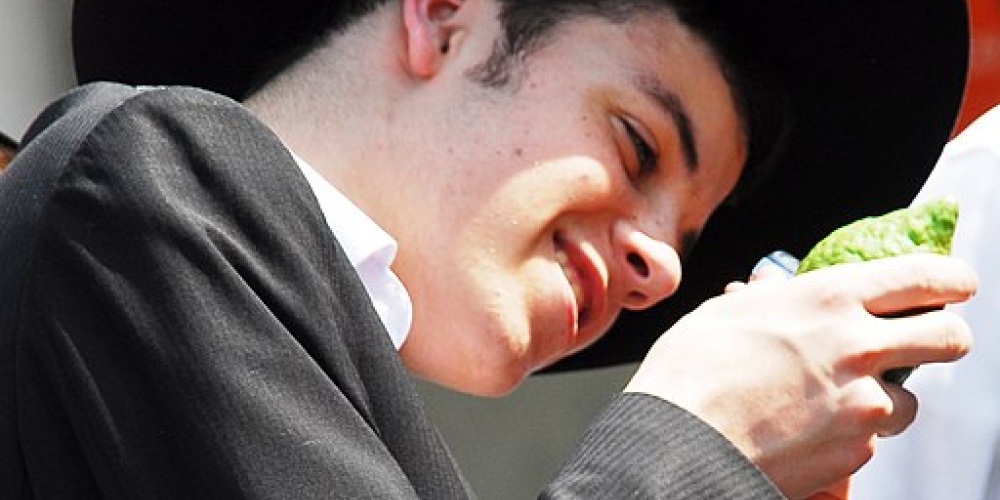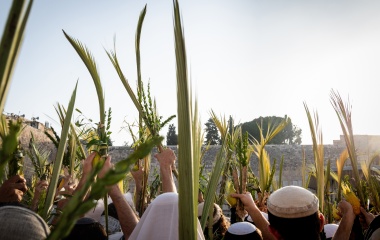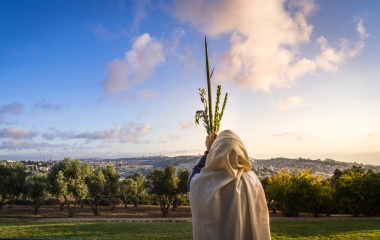
Sukkot marks the beginning of the end of the holiday season. As the fall season commences, and as the days get progressively shorter and colder, festivities become more difficult. Travelling to Jerusalem for inspiration is no longer feasible and we must rely on the spiritual renewal gained during the previous six months of holidays.
Our sages noted that in reality, Sukkot should be celebrated in the spring. After all, the Torah tells us that the purpose of the Sukkot celebration is “so that the future generations will know that I had the Israelites live in huts when I brought them out of Egypt” (Vayikra 23:43). While historically, Sukkot may belong in the spring, the Torah purposely placed its celebration in the fall. Sukkot thus not only marks the culmination of the three pilgrimage festivals and the culmination of the food cycle, it also marks the conclusion of the “high holiday period”, ushered in two weeks earlier with Rosh Hashanah.
Sukkot is the concrete expression of the renewed relationship with G-d developed over Rosh Hashanah and Yom Kippur. After 10 days of intense reflection and prayer, we are ready to take on the challenges that the New Year will inevitably bring. Having felt the presence of G-d more acutely, it is no wonder that Sukkot is known as z’man simchateinu, the time of our joy. True simcha is defined as being in the presence of G-d, and the serenity that we feel knowing that it is G-d and G-d alone who controls the world. Yes, man has the ability to wreak much harm – G-d has granted us free choice – but knowing that G-d has a master plan for the world is very comforting and ultimately fills us with joy. We have no fear as we leave the comforts of our home to be (symbolically?) exposed to the cruel elements of the outside world, confident that G-d will spread the sukkat shalom, the canopy of peace, upon us.
While on Yom Kippur we experience G-d through fasting and the denial of physical comforts, on Sukkot we experience G-d through feasting. While on Yom Kippur we come closer to G-d through fear—“the Books of Life and Death are open before Him”—on Sukkot, our closeness to G-d is achieved through simcha, joy. While Yom Kippur is spent in reflective isolation and introspection, Sukkot is spent rejoicing with family and friends. And while Yom Kippur is a day of joy, it is Sukkot that is z’man simchateinu. Simcha can only be truly celebrated with others. Thus, Sukkot must be celebrated with our physical guests, “the Levi, the convert, the orphan, the widow from your communities” (Devarim 16:14) and our symbolical guests as we welcome the ushpizin, seven of our “founding fathers”. We offer 70 korbanot on behalf of the 70 founding nations of the world (see Genesis 10). On Sukkot, we realize we live in an unstable world and that we must be involved in tikkun olam, the improvement of the world. Personal growth that results in no concrete benefit to the community serves little purpose. Yom Kippur without Sukkot loses much of its meaning.
Our holiday season begins with Pesach when we celebrate the birth of our nation – in fact, a non-Jew is not allowed to partake of the paschal lamb. On Shavuot, we celebrate the receiving of Torah. While Torah has a message for the entire world, it is the special bond between G-d and the Jewish people. By accepting the Torah, we became “My special treasure among the nations” (Shemot 19:5). As Rosh Hashanah and Yom Kippur approach, we focus on our personal relationship with G-d. It is only on Sukkot, the culmination of the holiday season, that we can put it all together. We look beyond ourselves to the community and beyond the Jewish people to the entire world. It is no wonder that the term chag, holiday, in rabbinic literature refers to none other than Sukkot. It is the holiday that contains the essence of all the others.
Photo by Udi Steinwell via Pikwiki.



